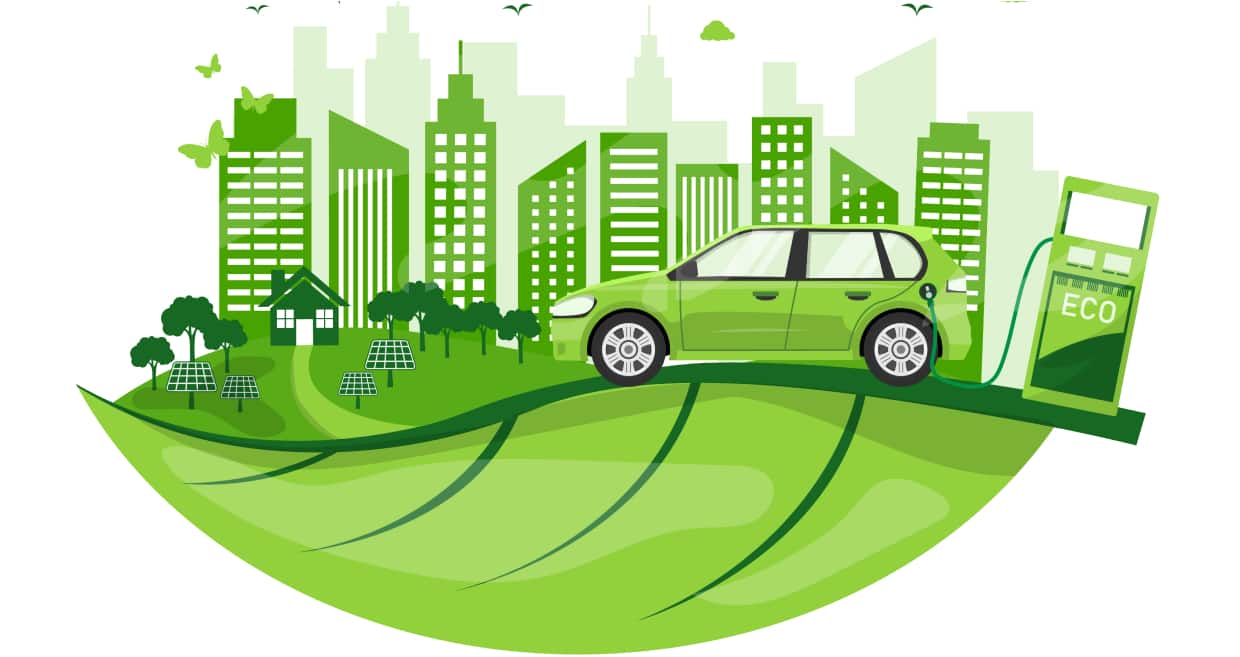The Environmental Impact of Electric Cars: Myth vs. Reality
Dive into myths, unveil realities, and discover the environmental impact of electric vehicles.
In the realm of sustainable transportation, electric cars have emerged as the eco-warriors, promising a cleaner,
greener future. However, amid the buzz surrounding electric vehicles (EVs), it's crucial to decipher the truth
from the myths surrounding their environmental impact.

Myth: Electric cars are entirely emission-free.
Reality:
While it's true that EVs don't emit pollutants from tailpipes, the bigger picture lies in the energy sources used to charge them. If the electricity comes from coal or other non-renewable sources, the overall impact on the environment remains substantial. Hence, this highlights the importance of transitioning to renewable energy and using it to charge EVs.
Myth: Electric vehicle batteries are environmental hazards.
Reality:
While the manufacturing process for batteries does have an environmental impact, ongoing rapid advancements in battery technology and the rise of recycling programmes are mitigating concerns about the manufacturing and disposal of electric vehicle batteries. These not only reduce the environmental footprint but also address worries about hazardous waste.
Myth: Electric cars have a higher manufacturing impact that outweighs the environmental benefits they bring.
Reality:
While the initial production of EVs may have a higher environmental impact, their overall efficiency gains during operational life often offset these costs, especially as manufacturing processes become more energy-efficient.
Myth: Electric cars only shift the emissions problem.
Reality:
As the world transitions to renewable energy sources, EVs become increasingly beneficial, effectively reducing their indirect impact on the environment by aligning with greener energy grids.
Myth: The environmental benefits of electric cars are overstated.
Reality:
Life cycle assessments, considering manufacturing, usage, and end-of-life factors, reveal that EVs contribute significantly to reducing overall carbon emissions compared to traditional vehicles.
Myth: Electric car production involves excessive raw material extraction.
Reality:
Innovations in material sourcing and recycling practices are minimising the environmental impact of obtaining materials for EV production.
Myth: Electric cars don't address urban air quality issues.
Reality:
With zero tailpipe emissions, EVs contribute to improved air quality in urban areas, reducing harmful pollutants that often accompany traditional combustion engines.
Myth: Electric cars succeed solely due to consumer demand.
Reality:
Supportive government policies, including incentives and regulations promoting clean energy, play a crucial role in the widespread adoption and success of electric vehicles.
Myth: Electric cars are a passing trend.
Reality:
As technology advances, public awareness grows, and environmental concerns escalate, EVs are becoming an enduring and essential component of the automotive landscape, shaping the future of sustainable transportation.
Key Takeaways:
- The environmental impact of electric cars is a multifaceted issue.
- It's not just about zero-emission claims but understanding the broader ecosystem, including energy sources, manufacturing processes, end-of-life considerations, and so on.
- Rather than dismissing EVs based on myths, embracing them with an awareness of the complexities involved is the key to fostering a genuinely eco-friendly automotive landscape.
